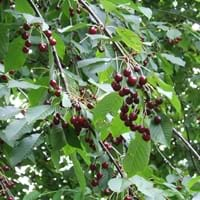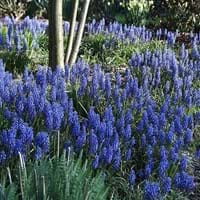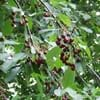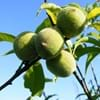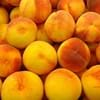Life Span
Perennial
Perennial
Type
Fruit
Bulb or Corm or Tuber
Origin
Hybrid origin, Europe, Asia
Mediterranean, Southeastern Asia
Types
Fruit
Not available
Number of Varieties
Not Available
Habitat
Temperate Regions
Fields, Open areas, Terrestrial
USDA Hardiness Zone
4-8
Not Available
AHS Heat Zone
8-1
Not Available
Sunset Zone
A2, A3, 1a, 1b, 2a, 2b, 3a, 3b, 4, 5, 6, 7, 8, 9, 14, 15, 16, 17
21,22
Habit
Upright/Erect
Clump-Forming
Minimum Height
Not Available
Minimum Width
Not Available
Flower Color
White
White, Yellow, Blue, Purple, Pink, Olive, Blue Violet
Flower Color Modifier
Bicolor
Bicolor
Fruit Color
Red, Dark Red
Brown, Black
Leaf Color in Spring
Dark Green
Not Available
Leaf Color in Summer
Dark Green
Light Green
Leaf Color in Fall
Dark Green
Several shades of Green
Leaf Color in Winter
Light Green
Light Green
Leaf Shape
Simple lobed or unlobed
Narrow
Plant Season
Spring, Summer, Fall
Not Available
Sunlight
Full Sun, Partial Sun
Full Sun, Partial Sun
Growth Rate
Medium
Not Available
Type of Soil
Clay, Loam, Sand
Not Available
The pH of Soil
Acidic, Neutral, Alkaline
Not Available
Soil Drainage
Well drained
Well drained
Bloom Time
Spring
Not Available
Tolerances
Drought
Drought
Where to Plant?
Ground
Container, Ground, Pot
How to Plant?
Semi-hardwood and hardwood cuttings
From bulbs, From Rhizomes, Seedlings
Plant Maintenance
Medium
Medium
Watering Requirements
Keep ground moist, Use Mulches to help prevent water loss during hot and windy weather
Get enough water whenever the soil is dry, Keep the ground moist but not water-logged, Keep the Soil well drained
In Summer
Lots of watering
Lots of watering
In Spring
Moderate
Moderate
In Winter
Average Water
Average Water
Soil pH
Acidic, Neutral, Alkaline
Not Available
Soil Type
Clay, Loam, Sand
Not Available
Soil Drainage Capacity
Well drained
Well drained
Sun Exposure
Full Sun, Partial Sun
Full Sun, Partial Sun
Pruning
Remove damaged leaves, Remove dead branches, Remove dead leaves
Remove damaged leaves, Remove dead branches, Remove dead leaves
Fertilizers
All-Purpose Liquid Fertilizer
All-Purpose Liquid Fertilizer
Pests and Diseases
Birds
Armored scales, Crown rot, Slugs
Plant Tolerance
Drought
Drought
Flower Petal Number
Single, Double
Single
Foliage Texture
Medium
Medium
Foliage Sheen
Glossy
Glossy
Attracts
Birds
Bees, Butterflies
Allergy
Anaphylaxis, gastro-intestinal problems, Itchiness, Skin irritation
Diarrhea, Itchiness, Skin irritation, Stomach pain, Vomiting
Aesthetic Uses
Beautification, Bouquets, Informal Hedge, Landscape Designing, Showy Purposes, Wild gardens
Cottage Garden, Landscape Designing
Beauty Benefits
Not Available
Not Available
Environmental Uses
Air purification
Air purification
Medicinal Uses
anti-inflammatory, Anti-oxidant, Gout, Insomnia, Soothing and relieving pain
Diuretic, Stimulates new cell growth
Part of Plant Used
Flowers, Fruits
Buds, Flowers
Other Uses
Air freshner, Beneficial species for attracting pollinators, Cake, Edible syrup, Oil is used in perfume, soaps, creams, etc., Used to make juice
Traditional medicine, Used for fragrance
Used As Indoor Plant
No
Yes
Used As Outdoor Plant
Yes
Yes
Garden Design
Edible, Feature Plant, Fruit / Fruit Tree
Container, Cutflower, Mixed Border, Rock Garden / Wall
Botanical Name
PRUNUS cerasus 'Northstar'
MUSCARI
Common Name
Northstar Tart Cherry, Pie Cherry 'Northstar'
Grape Hyacinth
In Hindi
आलूबालू
अंगूर जलकुंभी
In German
Northstar Tart Cherry
Traubenhyazinthen
In French
Northstar Tart Cherry
Muscari
In Spanish
Cereza
Muscari
In Greek
Northstar Tart Cherry
grape hyacinth
In Portuguese
Northstar Tart Cherry
Muscari
In Polish
Northstar Tart Cherry
Szafirek
In Latin
Northstar Tart Cherry
Muscari
Phylum
Magnoliophyta
Tracheophyta
Class
Magnoliopsida
Magnoliopsida
Order
Rosales
Asparagales
Family
Rosaceae
Asparagaceae
Clade
Angiosperms, Eudicots, Rosids
Angiosperms, Monocots
Tribe
Not Available
Not Available
Subfamily
Not Available
Scilloideae
Number of Species
Not Available
Importance of Northstar Tart Cherry and Grape Hyacinth
Want to have the most appropriate plant for your garden? You might want to know the importance of Northstar Tart Cherry and Grape Hyacinth. Basically, these two plants vary in many aspects. Compare Northstar Tart Cherry and Grape Hyacinth as they differ in many characteristics such as their life, care, benefits, facts, etc. Every gardener must at least have the slightest clue about the plants he wants to plant in his garden. Compare their benefits, which differ in many ways like facts and uses. The medicinal use of Northstar Tart Cherry is anti-inflammatory, Anti-oxidant, Gout, Insomnia and Soothing and relieving pain whereas of Grape Hyacinth is Diuretic and Stimulates new cell growth. Northstar Tart Cherry has beauty benefits as follows: Not Available while Grape Hyacinth has beauty benefits as follows: Not Available.
Compare Facts of Northstar Tart Cherry vs Grape Hyacinth
How to choose the best garden plant for your garden depending upon its facts? Here garden plant comparison will help you to solve this query. Compare the facts of Northstar Tart Cherry vs Grape Hyacinth and know which one to choose. As garden plants have benefits and other uses, allergy is also a major drawback of plants for some people. Allergic reactions of Northstar Tart Cherry are Anaphylaxis, gastro-intestinal problems, Itchiness and Skin irritation whereas of Grape Hyacinth have Diarrhea, Itchiness, Skin irritation, Stomach pain and Vomiting respectively. Having a fruit bearing plant in your garden can be a plus point of your garden. Northstar Tart Cherry has showy fruits and Grape Hyacinth has no showy fruits. Also Northstar Tart Cherry is not flowering and Grape Hyacinth is not flowering . You can compare Northstar Tart Cherry and Grape Hyacinth facts and facts of other plants too.
